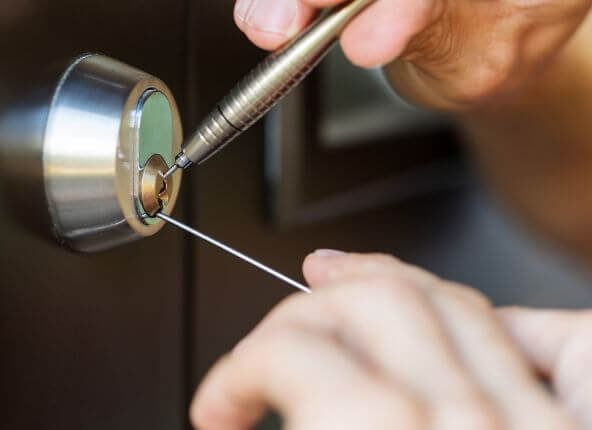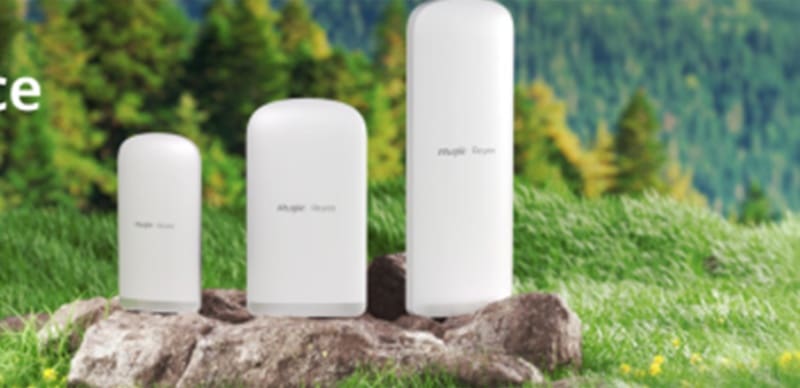
How Easy Is It To Bypass a Europrofile Lock Cylinder?
What is a Europrofile Lock Cylinder? Most people have at least one Europrofile lock cylinder...
Are you considering buying a top-of-the-range alarm and home automation system for your home? Maybe you’ve just bought one and you’re worried you’ve not made the right choice. Well this is my take on Qolsys versus Ajax home alarm and home automation systems.
Both Qolsys and Ajax are home alarm systems which have been developed to allow home automation routines, triggers and scenes to be included in the system. Now there are things like Control 4 and Fibaro which are probably a little bit more flexible when it comes to the home automation part of things but they don’t tick the boxes from a security point of view which is obviously where we as a security company are coming from. So, this is our comparison between those two systems.
It’s vital for you reading this blog, that we’re completely objective about the things we say. Obviously we’ve been a registered Qolsys installer for a number of years now and it could easily be that we’re biased in this and what we don’t want it to turn into is us saying how wonderful Qolsys is and how rubbish Ajax is. That’s just not the case. Ajax is an excellent system.
So what I’ve done is I’ve divided the features into three different sections.
We’re going to talk about technology, we’re going to talk about the actual features and we’re going to talk about the costs.
All of the areas that I talk about with the exception of cost are publicly available information which you can Google if you so choose and that’s what I’m going to be using to compare and contrast the two systems.
Cost is slightly different because that’s something that we’ve got access to as an installer which you wouldn’t necessarily have access to unless you went to an installer for quotations. But again we’re still going to be objective about it.
Anyway we’re going to crack on now and talk about the technology.
First up we’re talking about the technology that the systems use and my first criteria is about the transmission range. Both manufacturers claim a transmission range of two kilometers. Now you might be thinking well I don’t need anything like two kilometers and that’s quite a good job really. Yes, if they put a transmitter outside in a field and two kilometers away they put a receiver, the signal will get through but when you’ve got walls and things in the way, then the transmission range is drastically reduced.
Having said that of course even the largest of houses, the transmission range on both systems will be perfectly adequate for the signal to get through from a far-flung sensor through to the control panel.
The second thing that we’re going to talk about then is the security features of the transmitters. What happened with the original kind of wireless alarm systems was that people would be able to hack into the system, they’d be able to snoop and get the transmission codes just using a software-defined radio whilst sat outside your house. Both Qolsys and Ajax sensors transmit using 128-bit AES encryption which is basically military-grade encryption. There’s no way that anybody’s going to be able to hack into that.
The next criteria that I want to talk about is internet connection. Both manufacturers claim, and rightly so, that they use dual path technology. Both are using your broadband and a 4G SIM in their control panels to get the signal through to the server.
Both of them are true dual path, they use both channels simultaneously. Some manufacturers claim that they have dual path but one is only used as a backup. Generally speaking the 4G sim is only used as a backup, it saves a bit of cost which is fair enough but it’s not true dual path. With both Qolsys and Ajax the data going back to the server is sent through both broadband and 4G at the same time, it makes for brilliant reliability and it halves the time taken for a signal to get through to the server.
The next thing we’ll talk about is battery life. Qolsys claim that their batteries will last up to eight years whereas Ajax say seven years. This is the first little smidge of a difference between the two. These are manufacturers lab-based test claims.
In real usage you would aim to get three to four years from a battery, so in fairness I don’t think there’s a great deal of difference really between the two on this one.
And then the last criteria is what communication protocols they are compatible with. Do they use Z-Wave, Zigbee and Alarm.com?
Qolsys uses Z-Wave and has compatibility with Alarm.com whereas Ajax only talks to Zigbee. This is the major difference between the two in the technology section and it allows Qolsys to have a lot more advanced home automation features like thinking about triggers that go at a certain time of day or with certain weather conditions.
So overall in the technology section both systems are really really similar but with Alarm.com compatibility, Qolsys just sneaks it.
Section two is about the features of the two systems. So first up do the two systems have a mobile app? Yes they both do. Both systems can be monitored quite happily and both systems recommend that you have a professional installing them and in fairness I would recommend that too. They are both quite complicated systems and it’s probably a bit much for your average householder to do.
The two systems have also both have a huge range of devices involved. Both have motion sensors, door sensors, dual technology motion sensors, glass break sensors, shock sensors, seismic sensors. They both have gas, smoke detectors, water detectors. Both can talk to cameras. Both have light switches, smart plugs and water valves available.
Where the two systems differ slightly is that a lot of the more advanced things like water valves and smart plugs and things like that, with Qolsys they are Z-Wave compatible devices whereas with Ajax they’re Ajax’s own native types. Now with Ajax that means you have to use their own devices whereas with Qolsys maybe you’ve got a little bit more flexibility. Qolsys also has the capability to talk to thermostats which I don’t believe Ajax does.
Now maybe it could be argued that Ajax doesn’t need to have Z-Wave compatibility when it’s got a huge range of native sensors anyway and I can see the justification for that but both systems have a huge range that will cover the majority of people’s requirements. So still pretty much equal.
Then the last criteria I’m using is user interface and this is probably the biggest difference in this section. With Qolsys the standard system has a 7-inch touchscreen which you swipe and tap like a phone or a tablet and it has an app to control it. With Ajax there’s no screen so you just control it using the app.
I don’t really see that that’s a huge amount of difference really in terms of what you can do with it. I think we’ve got to really say that it’s a tie in this section.
In Section three, we’re talking about costs.
The two systems are exactly the same are in terms of monitoring costs because they both go through to independent monitoring stations so the cost for those will be the same and they both need professional installation so the cost for that will be the same.
There is a slight difference in terms of the app. Qolsys links to the Alarm.com app and there is a monthly cost for whatever you do with that and as you have more and more services (particularly when you start to get cameras involved) then the cost goes up.
With Ajax the basic app is free to use on a monthly basis but again as you start to take on more and more services then some of those become chargeable, so a slight win for Ajax on that one.
Then there’s the cost of the actual devices. Ajax is a little bit cheaper in all fairness.
Now I don’t want to go into too many details on the actual costs because what I’m looking at are costs to us as an installer and we would pass those on at a similar kind of cost differential to the client.
On this section for costs, Ajax wins.
A couple of other little factors which you may be wanting to take into consideration, let’s talk about warranty on the components. With Qolsys they say that it’s either two years from date of manufacture or one year from date of purchase whichever comes sooner. With Ajax they’re just a nice simple two years from date of purchase so slight win for Ajax on that one.
Lastly, we’ll talk about the aesthetics of the control panel. I’m a real big fan of the Qolsys control panel it’s a seven inch touchscreen, you can set it up with customized photos so it looks like a photo frame and I just think it’s a lot easier to really use. With Ajax there’s no screen involved it’s just a black box so it can be nice and unobtrusive hide it away put it underneath your broadband router something like that so horses for courses on that one.
Which wins in this section? I think because the warranty just seems that little tiny bit better it’s the tiniest of wins for Ajax.
To summarize, then, in technology it was a clear win for Qolsys.
For features, very much neck and neck, Even Stevens
Under costs Ajax won quite well there and in the last “other factors” section, the narrowest of wins for Ajax so overall a really narrow win for Ajax. But they’re so close, does it make that much difference, can you really say one is significantly better than the other? I don’t think you can, to be honest.
So over to you. Have you bought one of these systems? Do you agree with our assessment? If you haven’t bought one of these systems do you think we’ve been impartial enough? Let us know your thoughts in the comments.

What is a Europrofile Lock Cylinder? Most people have at least one Europrofile lock cylinder...

Losing a car key or dealing with a broken one can be a frustrating experience...

If you’ve ever asked yourself that question, then this is the article for you. Consider...
Lorem ipsum dolor sit amet, consectetur adipiscing elit.
For further information about Amberley Security, please do not hesitate to get in touch. We are always happy to help.